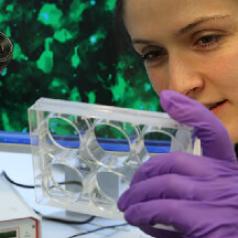Natural and chemical are two frequently opposed notions, natural being often perceived as something healthy while chemical is assimilated to something dangerous both to our health and to the environment. Yet in life, everything is chemistry, all materials and substances are chemicals! Natural is no exception. In fact, whether or not an ingredient is natural, it is composed of one or more molecules defined by a chemical name. For example, vitamin C is ascorbic acid, table salt is sodium chloride and white vinegar is water and acetic acid.
What's the difference between natural, a natural ingredient and a natural-origin ingredient?
Natural refers to something that is found as is in nature, be it on the land, in the soil or in the oceans, or that is obtained directly from plants, minerals, animals or the microbial world.
A natural ingredient is a chemical compound that comes from the plant, mineral, animal or microbial kingdom. It is obtained by processes of physical extraction (e.g. pressure), without any transformation of its constituents. This is the case, for example, of sunflower oil or olive oil commonly used in cosmetic products.
Unlike a natural ingredient, an ingredient of so-called natural origin has undergone transformation of its constituents. This transformation respects the principles of environmentally-friendly green chemistry that uses minimum energy and solvents and generates minimum waste. For example, Pro-Xylane, an anti-aging ingredient used in our cosmetic products, is derived from beechwood according to these same principles.

What is chemistry and a so-called “chemical” ingredient?
Chemistry is the science that studies the structure, properties and transformations of matter. It is divided into various categories such as organic chemistry, inorganic chemistry, physical chemistry or environmental chemistry. For example, organic chemistry is the chemistry of derivatives of carbon and its compounds.
An ingredient is usually called “chemical” when it is obtained by synthesis. Synthesis processes are used to control the purity of the ingredient. In the case of a natural ingredient, which does not undergo any transformation, greater variability is possible in its properties such as composition, colour or odour.
In the cosmetics industry, we use chemistry to produce active molecules whose resources in the natural state are depleted or found in small quantities in nature, such as vanillin or vitamin C. These synthetic ingredients may be of plant, mineral or fossil origin (or derived from petroleum and its derivatives). They have undergone a greater chemical transformation than ingredients of natural origin.
The use of these chemically transformed ingredients also makes it possible to preserve biodiversity, by duplicating a natural molecule chemically rather than exploit it. This is often the case for ingredients used in fragrances.
Synthetic ingredient, natural ingredient: Is one safer than the other?
Chemistry is commonly associated with things that are artificial or synthetic. This association reinforces preconceived ideas: chemical is harmful but natural is good! This statement is totally false. Natural is not synonymous with health or safety, far from it. Actually, the most dangerous poisons are found in nature, such as animal venom, foxglove or hemlock (poisonous plants). Chemically transforming a material enables better mastery of its quality and reproducibility, thus limiting impurities. In Nature, the quality of natural ingredients varies according to the climate, the surrounding fields or even impurities that may have crept in.
Finally, it is also well known scientifically that it is the dose that makes the poison. Like all types of ingredients, a natural ingredient, such as sugar or salt, can be dangerous if used in inappropriate doses. All our products formulated with ingredients that are natural or otherwise, are subject to strict evaluation of their safety for humans and the environment, taking into account the conditions of use: usage, frequency and dosing of ingredients.
Our Commitments
At L'Oréal, we are committed to respecting biodiversity and preserving natural resources. Beyond the notions of natural or chemical, what is fundamental to preserving the planet is the use of renewable ingredients. Most of our raw materials come from renewable sources, and are largely of plant origin. We see biodiversity as a key source of innovation, so we are committed to sourcing ingredients in a sustainable and responsible manner. By 2030, 95% of the ingredients in our formulas will come from renewable plant sources or abundant minerals.
























